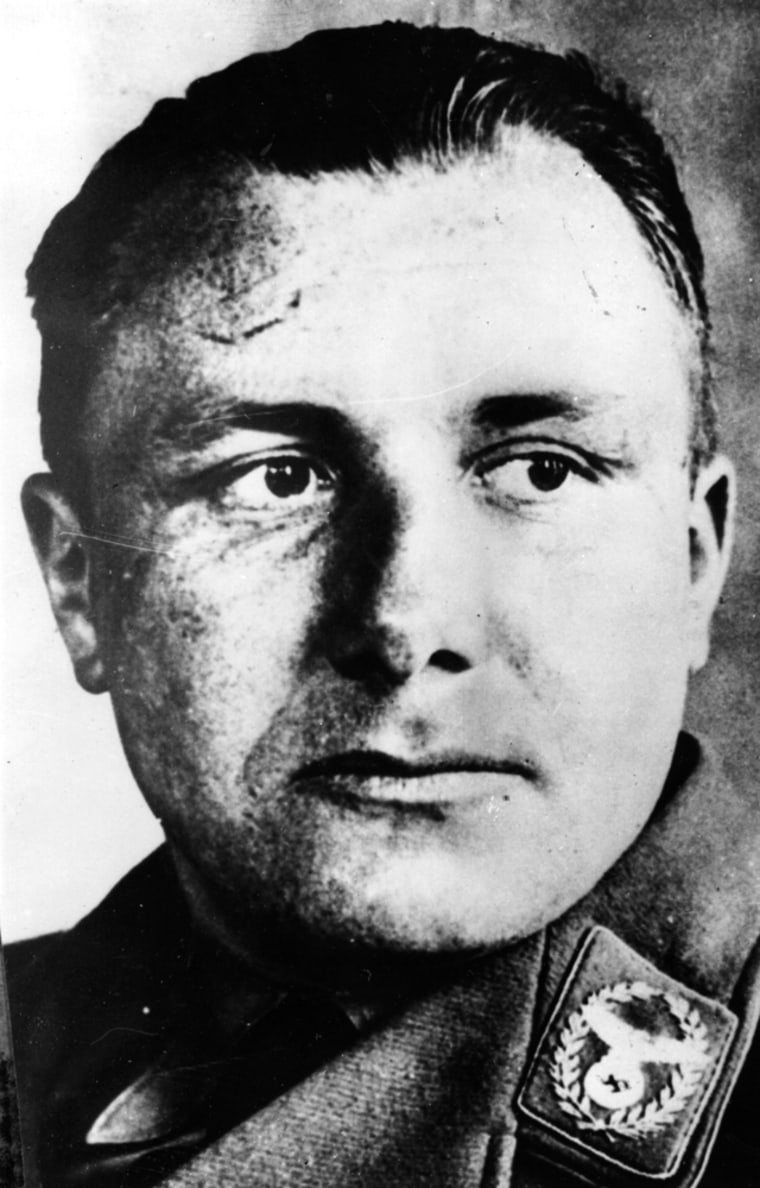It was one of the greatest mysteries of the collapse of the Third Reich. As Russian tanks moved into Berlin and Adolf Hitler committed suicide in his bunker, his brutal and feared private secretary, Martin Bormann, simply vanished.
Early reports indicated he had been killed by Russian shells, but rumors persisted that he had fled abroad, and files released by the National Archives on Tuesday show Britain's security services carefully tracking possible sightings.
A file from October 1946 notes "reliable reports" that Bormann, the man held responsible for organizing the logistics of the Holocaust, was sighted in the Schaffhausen area of Switzerland. Bormann was never found in Switzerland, but security services continued to be bombarded with information about possible sightings.
Bormann had been tried and sentenced to death in absentia at the Nuremberg war crimes tribunal in 1945-46, and security services were growing more exasperated with people claiming to know Bormann's whereabouts.
Sightings around world
"The late but peripatetic Herr Bormann is currently being seen in Switzerland (the most persistent locale), Bolivia, Italy, Norway and Brazil in the last country sitting in state on a high mountain beside his pallid Fuerer," writes one frustrated official in 1947. "The press ... is doubtless waiting to break the silly season scoop, that he has been seen riding the Loch Ness monster. That ought to fetch some dollars, or something."
Historian Andrew Roberts said authorities were desperate to find Bormann as he was so closely involved in the workings of the Third Reich.
"Bormann was intimately involved in passing orders regarding the Holocaust from Hitler to Heinrich Himmler," he said. He was the link man between them and could have given invaluable information about the Fuerer's direct responsibility in the greatest crime against humanity.
Roberts said Bormann, if captured, would also have proved invaluable in tracking down other Nazi war criminals. "Nobody in Hitler's close inner circle knew the Fuehrer as well as Bormann did. He was there every night taking down Hitler's phrases and words and thoughts, and would have been extremely helpful to anyone who captured him," he said.
Media-fueled mania
The media helped fuel the mania for sighting Bormann. In 1951, London correspondent Arthur Veysey for the Chicago Tribune contacted British police to say he had met a German man claiming to be Bormann who had asked him to send some documents to the U.S. through a personal courier. Police were convinced it was a hoax, but asked Veysey to arrange to meet him again. The meeting never took place, leading police to complain that while "Veysey is not anti-British, he has the usual 'let the police get on with it' attitude of the average American."
The mystery behind Bormann's fate seemed to have been settled in 1972 when construction workers in Berlin dug up a skeleton. Experts concluded the remains were Bormann's after a five-month examination that included making X-rays of the bones, studying the teeth, and using the skull as a model to reconstruct what its face would've looked like. The specialists also determined that the man had probably died in May 1945, possibly by biting onto a cyanide capsule. Some still remained unconvinced, but West German authorities officially declared him dead in 1973.
